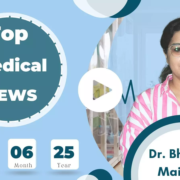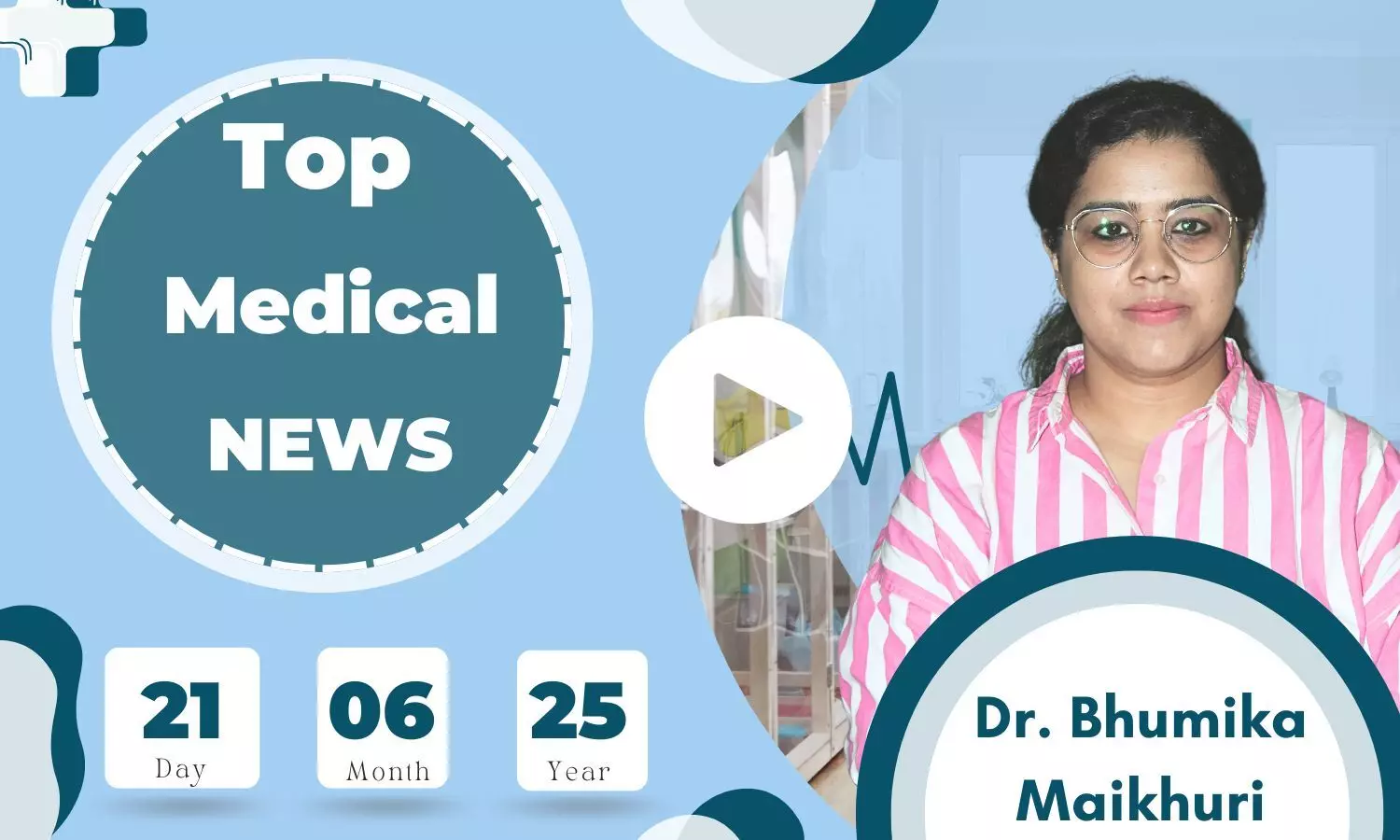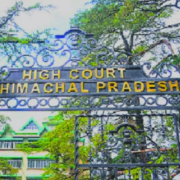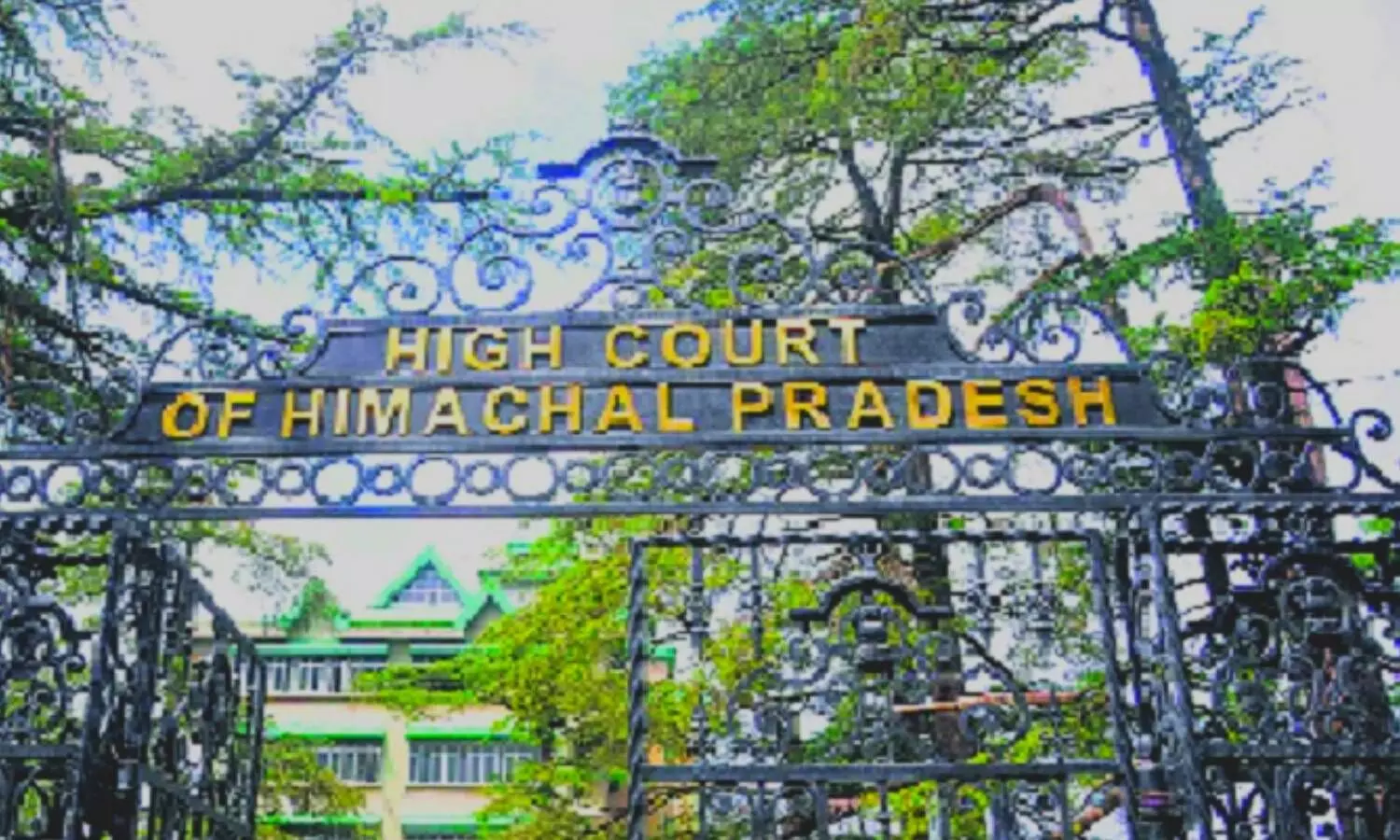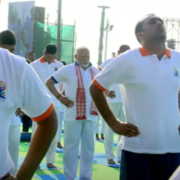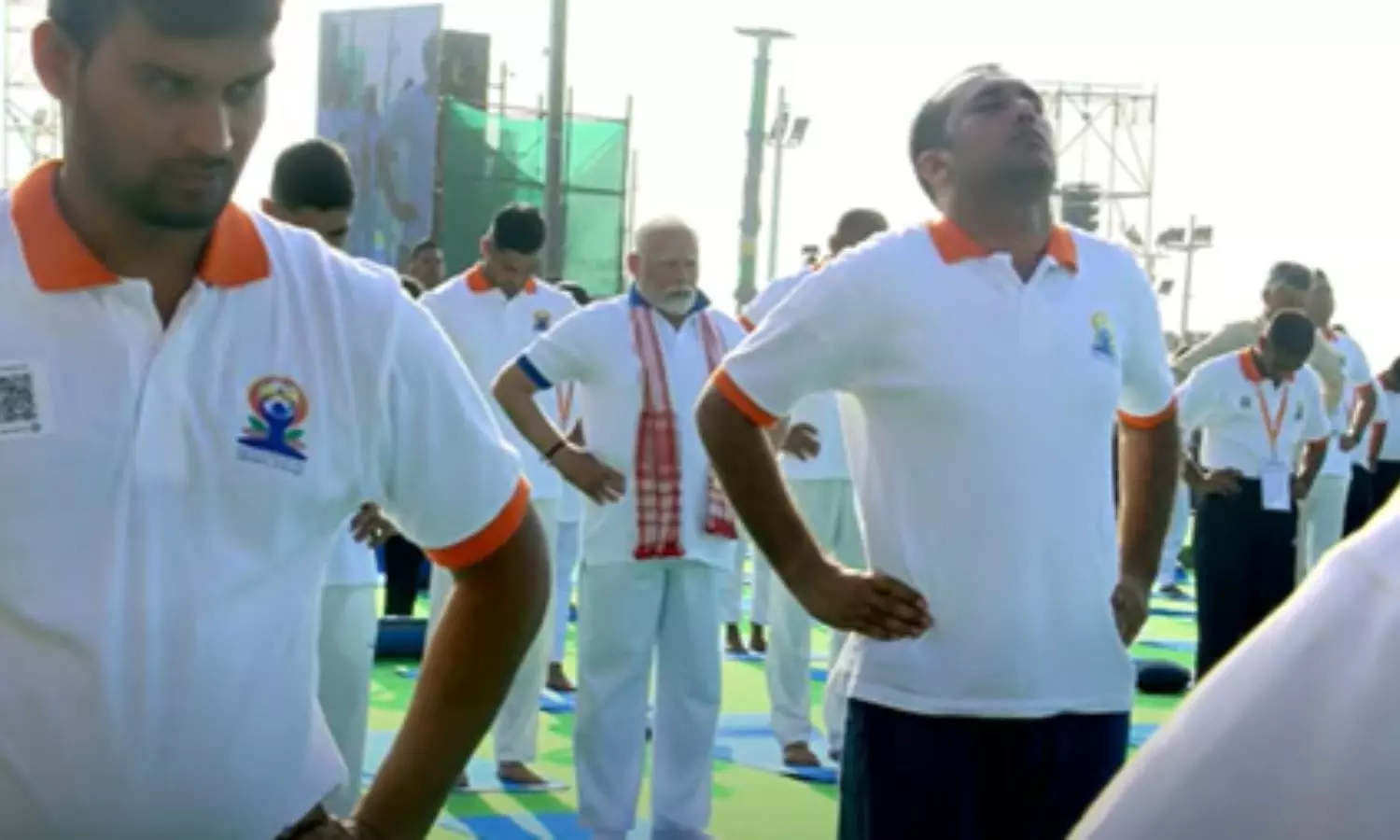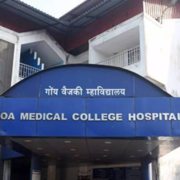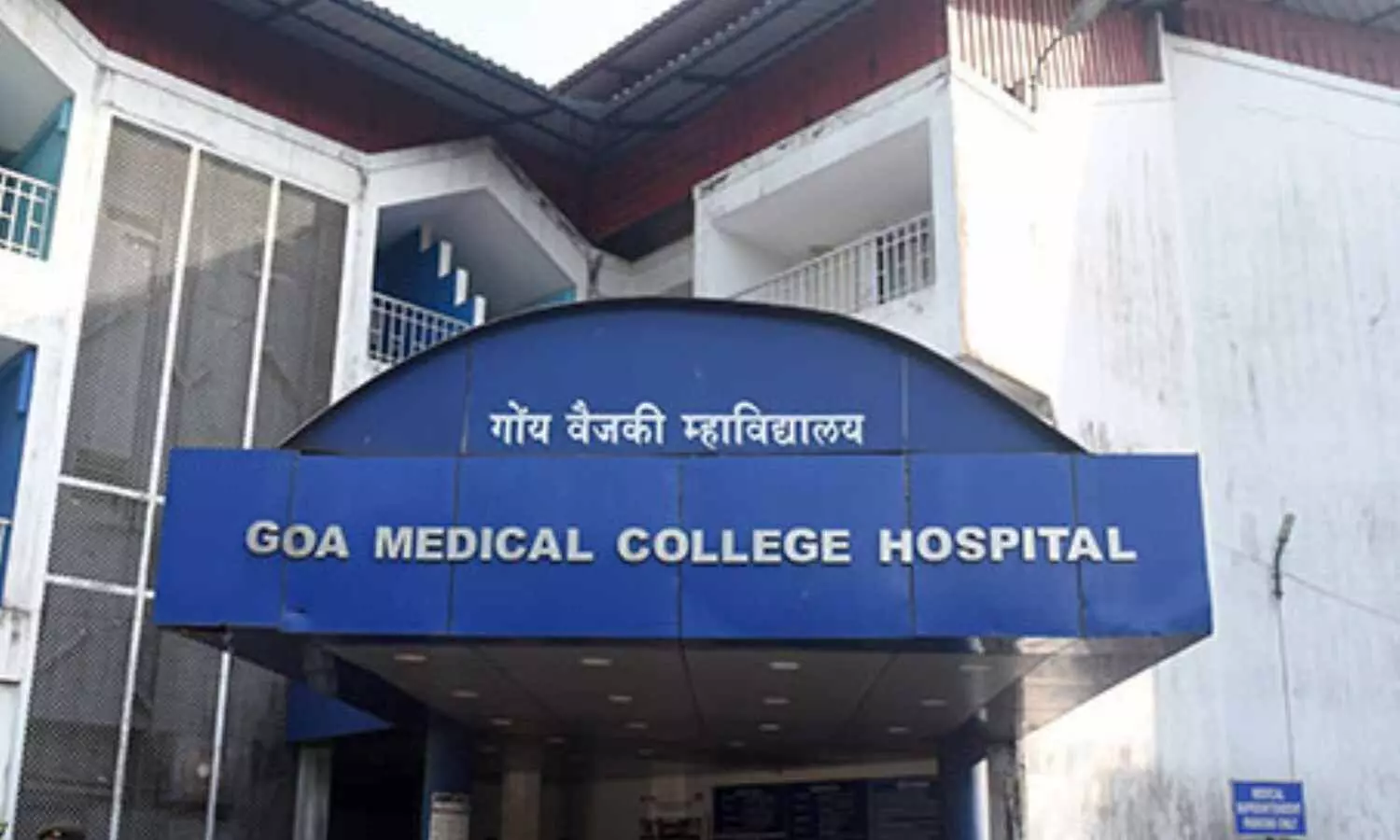New Delhi: Prime Minister Shri Narendra Modi extended warm greetings to people across India and the world on the occasion of the 11th International Day of Yoga.
The Prime Minister led the Yoga Day celebrations and took part in a Yoga session at an event in Vishakhapatnam, in Andhra Pradesh, today. He said, “Eleven years on, yoga has become an integral part of the lifestyle of millions across the globe.”
Prime Minister Narendra Modi expressed his deep satisfaction in witnessing the visually impaired (Divyang) reading yogic scriptures in Braille and applauded scientists practicing yoga even in outer space. He highlighted the active involvement of youth from rural areas in the Yoga Olympiads, emphasizing that from iconic landmarks like the Sydney Opera House to the peak of Mount Everest and the vast expanse of the ocean, the consistent message is: “Yoga is for everyone and for all, Beyond Boundaries, Beyond Backgrounds, Beyond age or ability.”
He noted that over two crore people have joined the Yogandhra Abhiyan, which he described as a vibrant display of public engagement. Prime Minister stressed that such enthusiastic citizen participation forms the cornerstone of a Viksit Bharat. When people take initiative and ownership of a cause, he asserted, achieving any goal becomes possible.
Also Read:AYUSH Ministry hosts 3-day Yoga Maha Kumbh in Delhi
Speaking about this year’s International Day of Yoga theme, “Yoga for One Earth, One Health”, Prime Minister said it conveys a fundamental truth: the well-being of all life on Earth is interconnected. He explained that human health is tied to the quality of soil, the purity of water, the well-being of animals, and the nourishment we receive from plants.
He said yoga helps awaken us to this deep connection and guides us toward unity with the world. “Yoga teaches us we are not isolated individuals but integral parts of nature. Initially, we learn to care for our own health and wellness, but gradually, this care expands to our environment, society, and the planet. Yoga is a profound personal discipline that, at the same time, serves as a collective system – one that transitions individuals from Me to We,” he stated.
He continued by saying that, “The spirit of ‘Me to We’ encapsulates the very soul of India,” and reflected on Indian values that encourage individuals to rise above personal interest and embrace the welfare of all. Referring to the cultural ethos, he said that India teaches the value of “Sarve Bhavantu Sukhinah” – the happiness and well-being of all is a sacred responsibility. This philosophy, he added, lays the foundation for service, selflessness, and harmony.
The Prime Minister expressed his concern about rising levels of stress, instability, and conflict across the world. He pointed to yoga as a solution, stating that “Yoga is the pause button humanity needs, to breathe, to balance, to become whole again.” He made a heartfelt appeal to the global community, proposing that “this Yoga Day mark the beginning of Yoga for Humanity 2.0, where Inner Peace becomes Global Policy.”
He emphasized the importance of making yoga more than just a personal routine—it should become a catalyst for global partnerships. Shri Modi called on all countries and societies to embed yoga into daily life and public policy, expressing his vision for a united effort to build a more peaceful, balanced, and sustainable planet. “Yoga should guide the world from conflict to cooperation, and from stress to solutions,” he concluded.
Raising awareness about the global challenge of obesity, the Prime Minister revisited his previous Mann Ki Baat address, where he had launched a campaign to reduce daily oil consumption by 10 percent. He renewed his appeal for people across India and the world to participate in this initiative. Shri Modi underscored that reducing oil intake, avoiding harmful dietary habits, and integrating yoga into daily life are essential for better health.
In his closing remarks, the Prime Minister urged everyone to make yoga a jan andolan. He envisioned a global wave of peace, wellness, and harmony driven by the power of yoga. He encouraged individuals to begin each day with yoga for personal balance and encouraged societies to embrace yoga to alleviate collective stress. Ending on a hopeful note, he affirmed: “Yoga should serve as a thread that weaves humanity together, Yoga for One Earth, One Health should become a global resolution.”
Union Minister of Health and Family Welfare, Shri Jagat Prakash Nadda marked the 11th International Yoga Day celebrations by leading a mass yoga demonstration with hundreds of participants in Kartavya Path, New Delhi.
Speaking on the occasion, Shri Nadda stated that, “It is due to Prime Minister Shri Narendra Modi’s efforts that Yoga Day is being celebrated internationally today. During his address to the UN General Assembly in 2014, Hon’ble Prime Minister had proposed for Yoga to be celebrated internationally every year on 21st June, which was backed by over 170 countries.”
Shri Nadda added that, “since 2015, yoga has found global acceptance as a holistic approach to well-being. Yoga not only improves people’s health and fitness but also enhances mental clarity and emotional regulation, contributing to more balanced and fulfilling life.”
The Union Health Minister informed that the 11th International Day of Yoga will witness crores of participants performing yoga from lakhs of destinations across India. He said, “It is a moment of pride that we all are gathered here to celebrate this ancient Indian knowledge system, uplift our body and mind in the process and understand ourselves better through the gift of Yoga.”
Shri Nadda highlighted that yoga has been included under the National Health Policy 2017 to offer a more holistic and accessible approach to healthcare. He also pointed out a new Centre for Integrative Medicine and Research has been set up in AIIMS Delhi to provide integrative solutions encompassing traditional medical systems like Yoga and modern medicines to address health concerns.
He concluded his address by encouraging all participants to make Yoga a part of their daily life and work towards a healthy nation.
Union Minister of State for Health and Family Welfare, Shri Prataprao Jadhav stated that “Yoga is a celebration of the universal consciousness that comes from the soul of India and has not only touched millions of lives but has also paved a lasting path for global health and collective peace”.
He also highlighted that, “In the last ten years, India, under the leadership of the Prime Minister, has established yoga not just as an ‘exercise’ or ‘alternative medicine’ but as a way of life. This is the era of moving forward by combining the spiritual depth, scientific authenticity and social harmony of yoga.”
Smt. Anupriya Singh Patel, Union Minister of State for Health and Family Welfare, noted that “Yoga is an invaluable gift of Indian culture, which has given the whole world the direction to live a healthy life”. “This is a wonderful science that connects body, mind and soul”, she stated.
Also Read:AYUSH Ministry Kicks Off 11th Yoga Day celebrations, PM Modi to lead Mega Event



